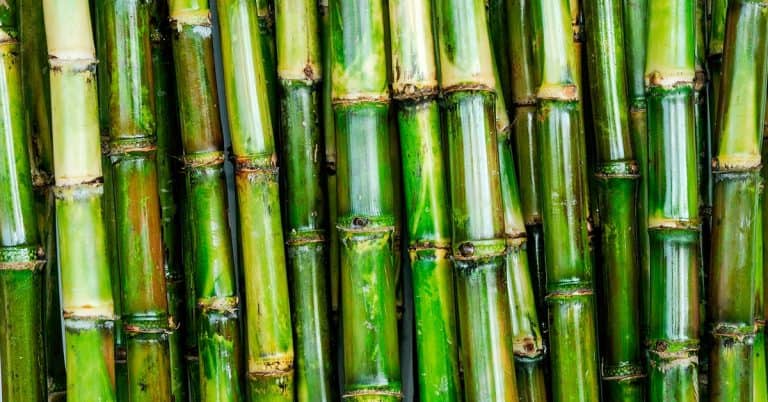In recent years, carbon capture and climatech companies have been on the rise, with investors showing more interest in sustainable and environmentally friendly solutions. One potential area of investment is the integration of Enhanced Rock Weathering (ERW) and bioenergy crop production. ERW has been identified as a potential carbon capture solution, while bioenergy crops offer a renewable energy source. Understand the potential synergies between Enhanced Rock Weathering and bioenergy crop production, its benefits, challenges, and strategies for sustainable integration.
How Enhanced Rock Weathering and bioenergy crops can work in synergy
As the world moves towards renewable energy solutions, carbon capture technologies and bioenergy production have emerged as key focus areas for sustainable development. One such innovative solution is the combination of Enhanced Rock Weathering (ERW) and bioenergy crop production.
The idea behind this strategy is to accelerate the natural carbon sequestration process by using rock dust on agricultural land and planting fast-growing bioenergy crops. This dual approach not only captures more carbon but also provides a sustainable source of energy.
As explained, ERW involves the addition of ground rock to soils. The rock reacts with carbon dioxide in the atmosphere, creating carbonate minerals and effectively sequestering carbon.
This technology can be applied to agricultural soils to improve fertility, as well as to coastal ecosystems to reduce ocean acidification. Regarding challenges, one that is prominent Enhanced Rock Weathering is sourcing the appropriate rock.
However, several sources have been identified, such glauconite, which is effective for carbon removal and has beneficial properties that can improve soil quality.
Bioenergy crops, on the other hand, are crops grown for bioenergy production. Biomass from crops such as maize, sugarcane, and switchgrass, can be used for bioenergy production, reducing dependence on fossil fuels.
These types of crops also have the potential to deliver environmental benefits such as increased biodiversity and improved soil health. However, there are also concerns about land-use changes, which could lead to habitat loss and deforestation.
The combination of these two approaches has the potential to deliver both environmental and economic benefits. ERW could be applied to the fields where bioenergy crops are grown to increase soil productivity and reduce carbon emissions from the atmosphere.
The bioenergy crop residues could also be used as organic inputs to enhance the Enhanced Rock Weathering process. The symbiotic relationship between these two approaches could offer sustainable options for carbon capture and renewable energy production simultaneously.
However, there are challenges to a successful integration of the two approaches. What are they and how to tackle them?
Challenges to a successful integration of ERW and bioenergy crops and how to tackle them
One of the significant challenges in implementing this strategy is determining the best types and amounts of rock dust to use and the best bioenergy crops to plant. This process would vary regionally, given the different soil types and climates, among other factors. In this context, there’s also the management of the large quantities of rock needed for the ERW process.
Additionally, the economic feasibility of the strategy depends on the prices of bioenergy crops and the costs associated with rock dust production and transport. The use of public policies to create incentives for farmers to implement this strategy might be a way of overcoming these challenges.
Moreover, land-use shifts associated with bioenergy crop production can also lead to indirect emissions from land-use changes such as deforestation.
It’s worth noting that the sustainable integration of ERW and bioenergy crop production depends heavily on proper management and conservation practices. The strategy must be developed to minimize the environmental and economic impact of the agricultural ecosystem.
A proper crop management schedule for calendar-year soil maintenance, including crop rotation, reduced tillage techniques, and fertilization guidelines, must be developed.
Moreover, water management practices must be optimized for each specific ecosystem. Finally, the amount and type of rock dust added to the soil must be adjusted over time to maintain soil health and maximize carbon sequestration and bioenergy crop productivity.
Another strategy for a sustainable integration could involve sourcing the rock locally, using agricultural residues such as sugarcane bagasse to produce bioenergy, and reducing indirect emissions by avoiding land-use changes and minimizing fertilizer use.
An additional strategy to enhance the potential benefits of the integration could be to explore the potential for co-production. Co-production involves the production of both a primary product and a secondary product from the same land, such as bioenergy crops and food crops.
The synergy between Enhanced Rock Weathering and bioenergy crops can help mitigate climate change and promote a sustainable agriculture
In conclusion, the integration of Enhanced Rock Weathering and bioenergy crop production has the potential to deliver sustainable solutions for climate change. The synergies between the two could offer both environmental and economic benefits, including carbon capture and renewable energy production.
However, there are challenges to a successful integration, such as managing quantities of rock and dealing with land-use changes. To tackle this, strategies for a sustainable integration could involve sourcing locally, minimizing fertilizer use, and exploring co-production.
With the right solutions in place, investing in the integration of ERW and bioenergy crop production could deliver significant benefits for carbon capture, renewable energy, and the environment.

